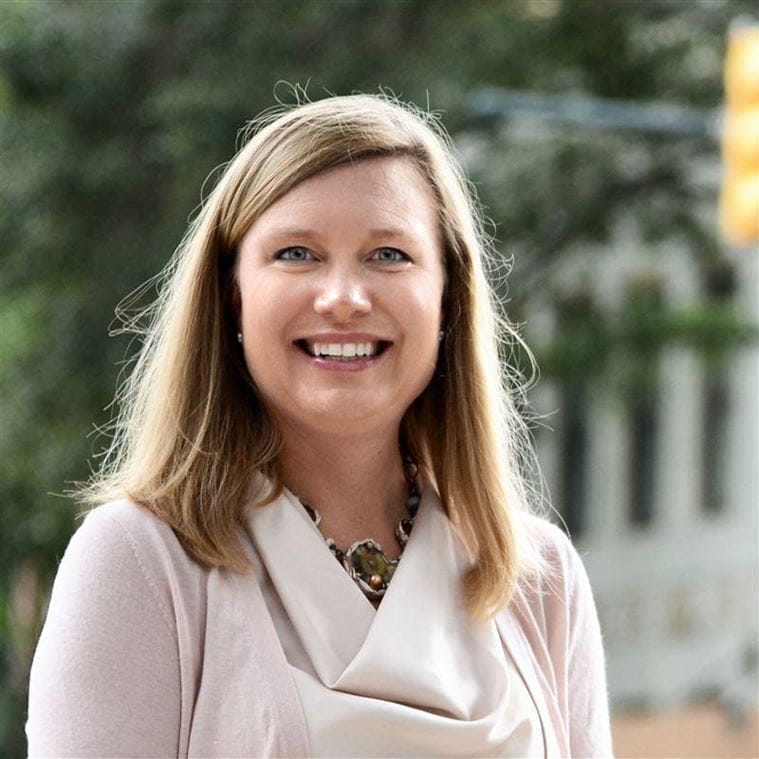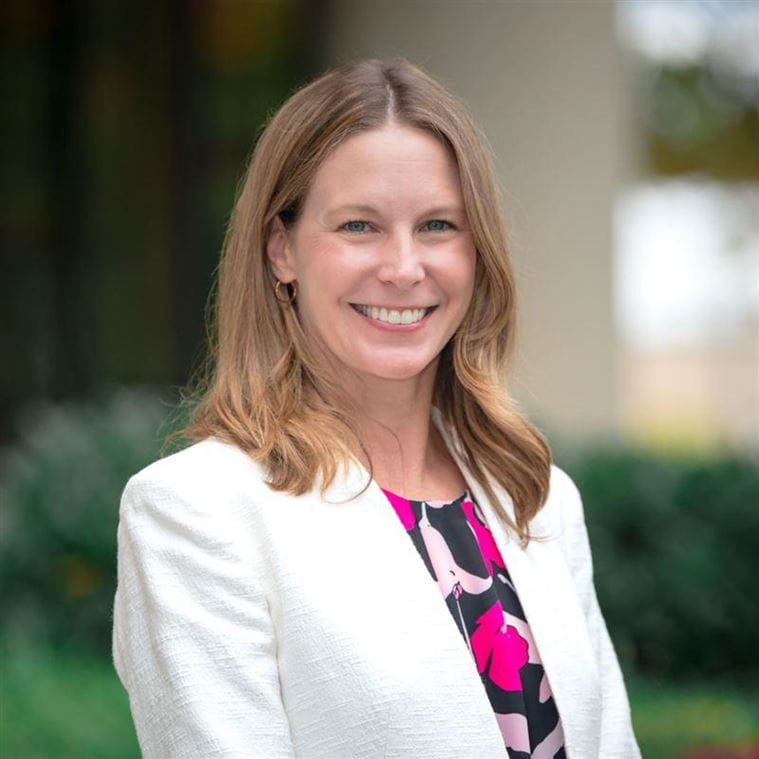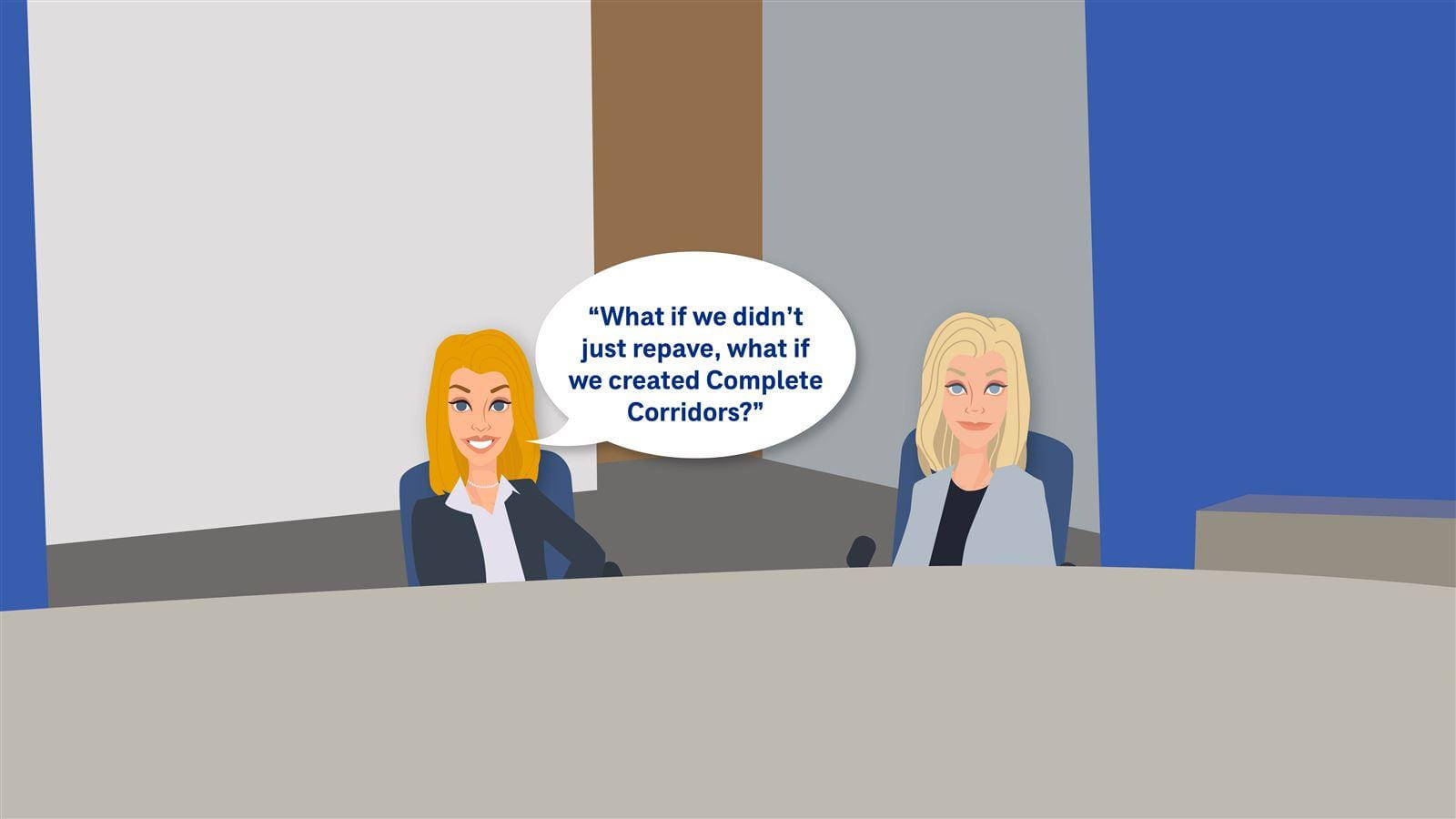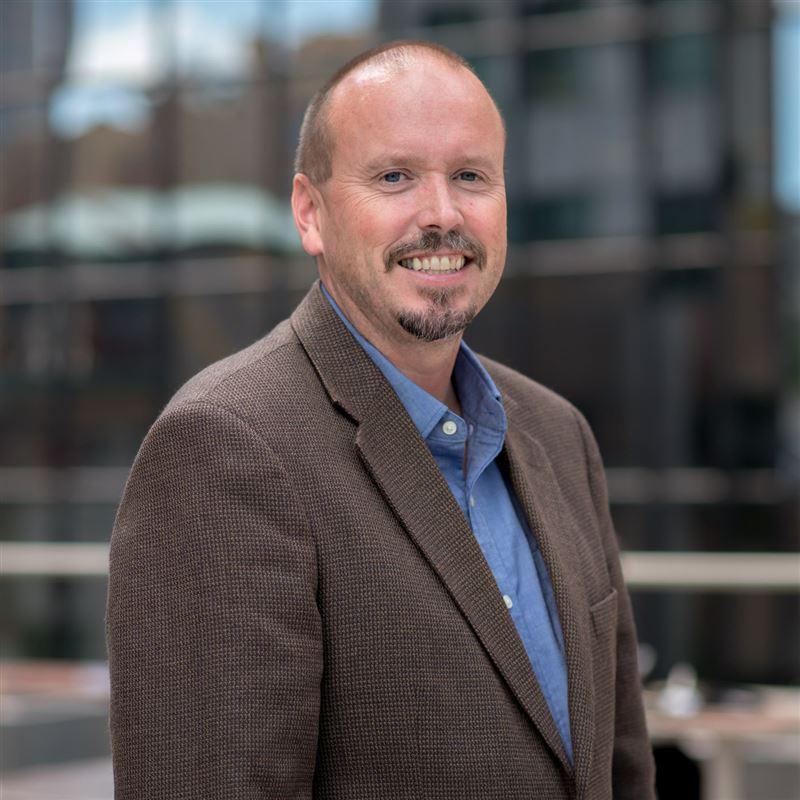Complete Corridors: Build it Back Better
Sandy Kutzing, lead in drinking water task force leader, and Jenny Humphreys, transportation planning and design expert, dig into what real coordination looks like between water and transportation teams to save clients time, money, and headaches by rebuilding smarter.
Want to learn more? Watch this short video with Sandy and Jenny.
More communication and coordination on the front end can save a lot of cost and aggravation on the back end.
Why Coordination Is Hard—and Important
Sandy: In my experience, the water department is separate from public works, which is separate from transportation, which is separate from the bike/pedestrian folks… and the funding is separate too. There’s not always an easy way to pull those groups together.
Jenny: That’s why facilitation is key for integrated infrastructure planning. Through our program management and infrastructure planning services, we bridge those silos by helping different departments and funding sources work together. Especially with transportation, projects often already have multiple funding streams. The tools exist to combine those pots of money and consolidate projects under one management structure.
Sandy: And you’d hope funding agencies would support that kind of smart coordination. With lead funding, for instance, a lot of it is coming through state-administered federal dollars from the Infrastructure Investment and Jobs Act (IIJA). Some states put limitations on what you can use funding for though.
Jenny: You can separate out the bid items: lead service line work funded by one source, and transportation improvements funded by another. It just takes coordination, not only locally but also at the state level, making sure the different program requirements are built into the same documents.
What We Mean by "Complete Corridors"
Sandy: Where are you seeing clients putting the Complete Corridors philosophy into action?
Jenny: One example that comes to mind is Washington, DC. DC Water is separate from the city’s public works team, so they’ve really had to coordinate closely. They’re prioritizing lead service line replacement in streets that are scheduled for paving and getting ahead of it so they don’t have to tear up freshly paved roads later. And of course, if the water main needs replacing, they’re doing that too.
Sandy: That’s a smart move. And you’ve worked on projects where you’re thinking even broader, like broadband, electric, and stormwater infrastructure. What about bike lanes and bus shelters? There’s real potential to level up.
Jenny: Yes! A few years ago, we started asking, “What if we didn’t just repave. what if we created Complete Corridors?” It’s about more than just restoring what’s there. It’s about rebuilding it better. One of our colleagues on the lead service line side once told me, “We just repaved a road, and now I wish we’d added bike lanes or improved the sidewalks while we were at it.” That stuck with me. Now we’re working with clients to plan out improvements more holistically, and figuring out, okay, if you’re rebuilding this road, what else should happen at the same time?
Sandy: In some of our lead programs, we’re already coordinating with DOTs or Public Works departments to get ahead of paving projects.
It’s not always going to be a full corridor reconstruction—sometimes it's just identifying where a couple projects align. Even combining two scopes of work can go a long way.
Program Managers Make It Happen
Jenny: Our program managers really drive this. They understand what’s happening in the corridor and across agencies. They know what conversations to have and when, and they’re the ones holding the bigger picture.
Sandy: They’re also thinking about public engagement, sequencing, construction planning—those are key. It’s not just about lining up schedules. It’s about getting stakeholders aligned too, from the elected officials down to the community members who just want to know when their road is going to be torn up.
Jenny: Absolutely. I regularly find a lot of value in our program management services group. They’re not just mega project managers, they bring this whole range of skills. From asset management—they know the data, forecast conditions—to funding professionals who understand the nuances of federal, state, local, and even private dollars. They’re out there actively pursuing grants and helping clients manage the funding side.
And then of course, the delivery specialists. The ones who know construction inside out, like cost estimating, assembling effective bid packages. They know just everything to support the full lifecycle of integrated infrastructure plans.
Sandy: Yeah, and also, they’ve got connections. They’re talking to elected officials and community leaders regularly.
This approach is improving the street, the utilities, the environment…and especially how people experience their neighborhood. That’s the real outcome.
The Future of Integrated Infrastructure Planning
Jenny: Complete Corridors isn’t a checklist. It’s a mindset. When we do this well, we’re improving the street, the utilities, the environment…and especially how people experience their neighborhood. That’s the real outcome.
Sandy: At the end of the day, we’re all trying to protect public health and build more resilient, connected communities. That’s what makes this work worth it.
Jenny: It’s about more than just restoring what’s there. It’s about rebuilding it better. If you’re ripping up the street for a lead project, and someone else comes along to pave later, or worse, you repave and then have to dig it up again for a water project, that’s such a waste of money.
Sandy: Exactly. It’s a real cost issue. Not to mention the aggravation felt in the community when we’re tearing up their road twice. And we’re trying to avoid that scenario where a DOT just paved and now we’re coming in and tearing it back up. But even that coordination still feels a little two-dimensional. There’s got to be more we can do and more ways to take this a step further.
Jenny: Definitely. In transportation, there’s never enough funding to do everything we need to. It’s painful to think about investing in a roadway project only to have it undone because another project wasn’t coordinated. So the opportunity to work together is exciting. And I think it’s pretty unique that we work at a firm where water, transportation, and energy is all under one roof.

We’re doing this big public health and safety project, and while we’re at it, we get the opportunity to improve all sorts of other safety issues.

There's less disruption, more value for every dollar, and stronger infrastructure in the long run by taking a complete corridors approach.








